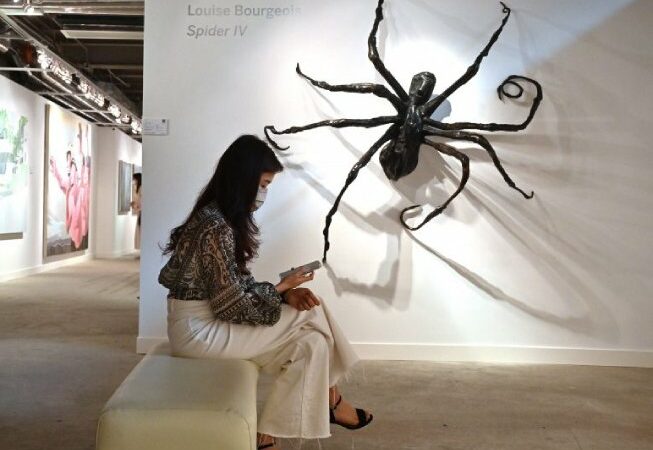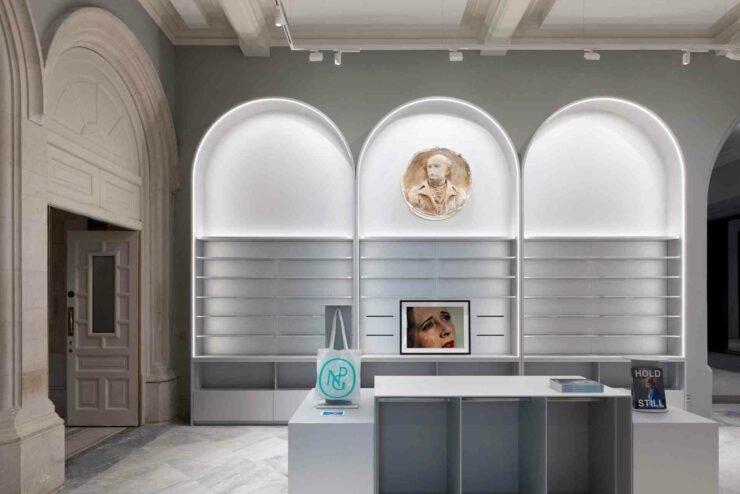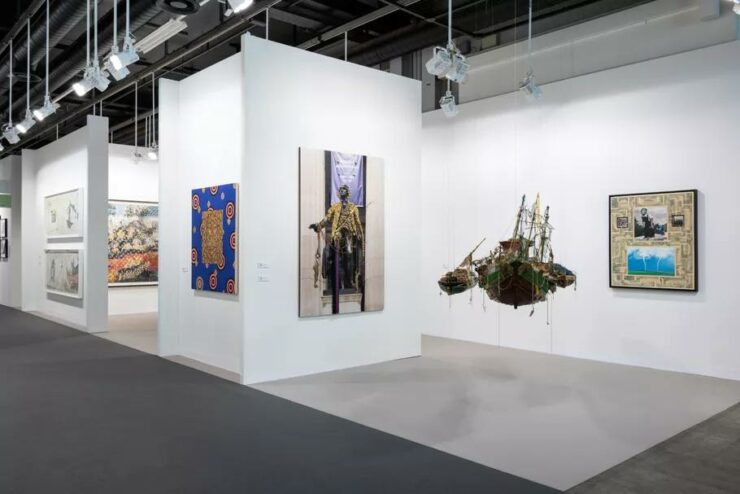Art Basel opened its doors to VIPs yesterday, with many remarking that the fair was the busiest they had seen in years, despite fears of a market slowdown. The new chief executive of Art Basel, Noah Horowitz, described the event as “the single most important annual event in the global art market” and the “barometer of the industry.” Major collectors and curators, including Frank Cohen and Cecilia Alemani, were spotted strolling the aisles of the Messe Basel, and security personnel at one crowded mega-gallery nervously herded customers past paintings worth millions of dollars.
Additionally, customers were spending, despite industry talk of a “cooler” market. Mid seven-and eight-figure deals incorporate Gerhard Richter’s larger than average model STRIP-Pinnacle (2023), introduced by David Zwirner at Limitless, for $2.5m. A 1996 Louise Bourgeois sculpture at Hauser & Wirth that was reported to have sold for $22.5 million to a US collector was said to be the work that sold for the most money during the VIP preview. A painting by Philip Guston was also sold by the gallery for $9.5 million. A new painting by Jonas Wood, offered by David Kordansky Gallery for $2.5 million, was among the high-profile primary market works that sold yesterday.
Are pre-sales lower?
However, as the preview day drew to a close, several high-priced items, including the most expensive, had not yet been placed: a $60 million Rothko painting with a sunset hue offered by Acquavella Galleries. A Picasso sold for reportedly $25 million at Landau and a $14 million Joan Mitchell triptych sold unconfirmed at Pace.
According to Pace’s president, Samanthe Rubell, the gallery kept pre-sales to a minimum this year. “A lot of major works get sold on the second and third day, and that’s generally been the case for the past five years.” We allow for happy accidents, but we ensure that our artists’ works are included in the most significant collections. An Alexander Calder mobile was sold for $2.8 million in the early hours of the fair, and the artist’s family offered two smaller works for $775,000 and $675,000.
Sadie Coles, whose London gallery sold “multiple” new works by Laura Owens from a solo stand with prices ranging from $90,000 to $1.8 million, claims that she kept things “old school” and did not give her customers a preview list of the works. Gagosian, on the other hand, sent out a checklist to its customers that was more than 100 pages long. Andrew Fabricant, the display’s head working official, says that the first day of the season was “the most active in years”.
After a New York spring auction season marked by reserved bidding, works bought in, and lowered reserves, discussion of pre-sales is particularly pertinent. According to art advisor Nilani Trent, “consumer confidence is being affected by inflation, interest rates, politics, and an ongoing war, which is causing a slowdown in the art market.”
“My general sense is that the general market is cooler,” says the seller David Nolan, who is appearing at the fair, proceeding with that “this is an essential necessary rectification in the market occasionally”. However, difficult times are frequently excellent times to purchase art because collectors and galleries are more receptive to discounts. Nolan continues, “The types of people who come to Basel are so diverse, and many of them budget specifically to buy at Art Basel and are less affected by the stock market and the fluctuations in interest rates.”
Horowitz presents a picture that is more assured. The possibility of a correction has been the subject of much discussion. The auction balances clearly indicate a genuine reset. However, demand for art is also extremely strong, he states. Horowitz believes that this year’s fair has fewer pre-sales, indicating that collectors are taking longer to commit. In the end, he says: It takes more effort to complete business, but it is being completed, and at fairly high prices as well.
Disclaimer: The views, suggestions, and opinions expressed here are the sole responsibility of the experts. No Marketwise Analytics journalist was involved in the writing and production of this article.


